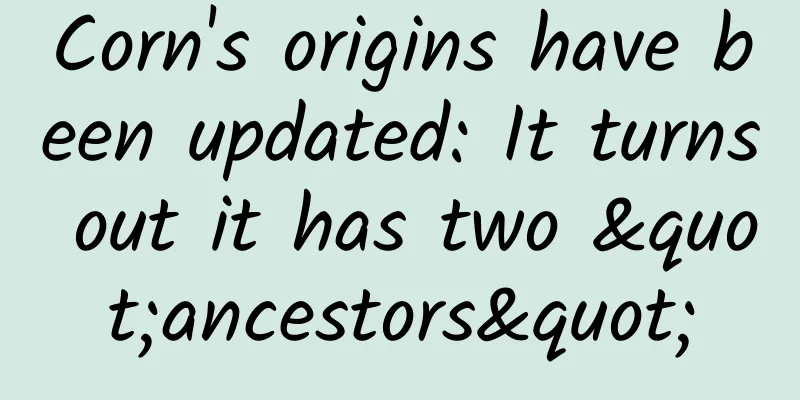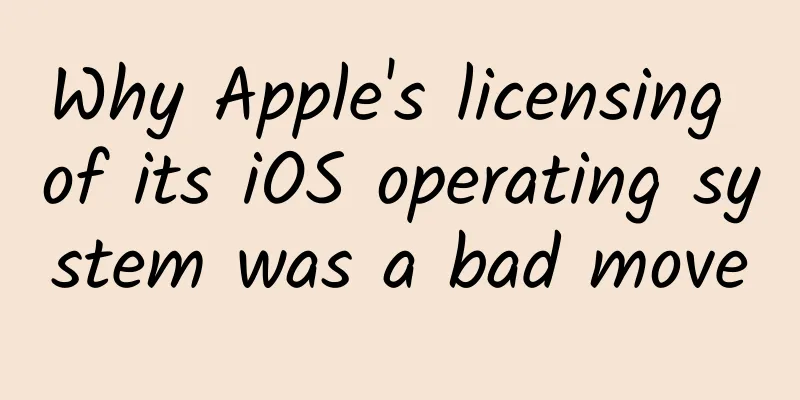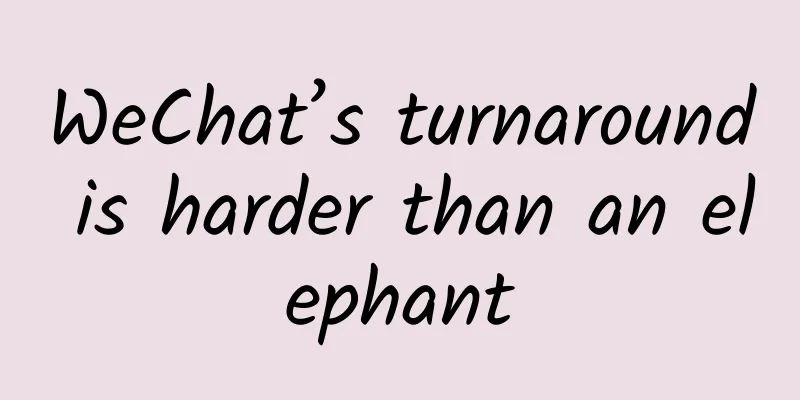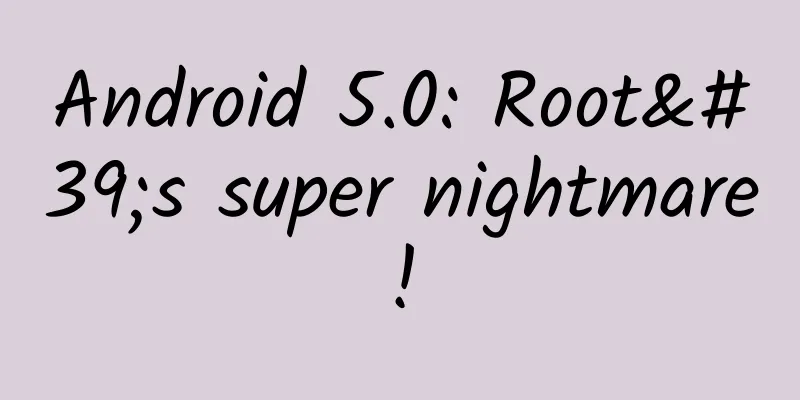Corn's origins have been updated: It turns out it has two "ancestors"

|
The food crops we eat all have their wild origins, but it is not always easy to find them. For example, corn. Until the first few years of the 21st century, the origin of corn was still a mystery. The biggest problem is that in the past few hundred years, humans have not found the wild ancestors of corn in the wild. Although everyone believes that Central and South America is the origin of corn, after scientists have turned the plant groups in this area upside down, they have not found a wild species that looks like corn. Corn is a crop that seems to be the Monkey King that popped out from the cracks in the rocks. Is this really the case? Humans have cultivated corn for a long time. Indians in Central and South America began to grow and eat corn in prehistoric times. It is no exaggeration to say that it is this plant, corn, that supports human civilization in South America. In Mayan culture, the corn god is a very important god. Corn is as important to South Americans as rice is to East Asians and wheat is to West Asians and Europeans. With the discovery of America by Columbus, corn began to spread all over the world and gradually became the staple food of different groups of people. Today, corn is an indispensable raw material for the modern food industry. The frequency of corn starch and corn syrup in the food industry is comparable to the frequency of the moon in the night sky. Because it is so important to corn, the search for the ancestor of corn has never stopped. After searching for a long time, scientists focused their attention on a plant called Teosinteus. If we look at teosinte by the standards of today's grain crops, it has no redeeming qualities at all - as the ancestor of corn, a teosinte plant has many branches, each of which has some thin ears (just like the foxtail grass we see today), and each ear has only a few kernels, and what's worse is that each kernel is wrapped in a hard shell. There is no doubt that these traits are in line with Darwin's theory of natural selection. Many well-protected seeds will bring more offspring, allowing teosinte to reproduce better. However, seeing teosinte in this state, no one can imagine that human ancestors would spend the effort to chew these weeds, let alone plant them as treasures in farmland. The transformation of teosinte into corn depends on the changes in two key genes. The first mutation occurred in the TB1 gene on chromosome 1. As a result, the mutant no longer produced branches, but only had one upright stem, so that more nutrients could be put into grain production, producing more edible and plump corn kernels. What is more critical is the second mutation, a gene called TGA1 mutated on chromosome 4. This mutation caused the hard shell to disappear, greatly improving the edibility of the mutant. Humans no longer have to find a way to deal with the big hard shell. So why did the genes of the ancestor of corn have such a coincidental mutation and become the shape that humans like? This brings us to some special genes in corn, the jumping genes. Before the 1940s, there was a consensus in the genetics community that the DNA sequence of organisms was constant, or simply put, the location of genes on chromosomes was immutable. However, a scientist named Barbara McClintock discovered a special phenomenon: in hybridization experiments, some genes would change their location on chromosomes, as if they were jumping around on the genome. This jump also affects the color of corn kernels. When the special gene "Dissociator" (Ds) "jumps", the gene for synthesizing anthocyanins in the corn kernels will be turned on, and these corn kernels will become colorful. Whether the gene jumps will also be controlled by other genes such as "Activator" (Ac). McClintock used the transposition theory to perfectly explain the turning on and off of certain genes between maize parents and offspring. In 1983, McClintock won the Nobel Prize in Physiology for his research on jumping genes, which can be said to be well deserved. In 2009, the results of the sequencing of a new corn genome came out. Surprisingly, 85% of the sequences in the corn genome belonged to the transposons discovered by McClintock. This also explains why the wild ancestor of corn (teosinte) had those incredible changes. After all, if you draw the lottery more often, there will always be a moment of luck. Today, the story of how teosinte became corn has become increasingly clear. However, the story is not over yet. Was the ancestor of corn single or multiple? Previously, the academic community believed that the Teosinteus gracilis subspecies was the only ancestor of corn. But there was a problem. This plant mainly grows in low-altitude areas in southwestern Mexico and is not adapted to high-altitude environments. However, archaeological evidence shows that corn had adapted to high-altitude environments as early as more than 6,200 years ago. At this time, another subspecies called Teosinteus zea came into the researchers' view. This species mainly grows in high altitude areas in central Mexico. In a study published in Science magazine in December 2023, Professor Yan Jianbing's team from the State Key Laboratory of Crop Genetic Improvement at Huazhong Agricultural University and a research team from the University of California, Davis, analyzed more than 1,000 teosinte and modern corn genomes, as well as nine ancient corn genomes from North and South America. The results showed that the Mexican highland teosinte subspecies had gene infiltration in corn. On this basis, the team accurately identified the proportion of gene infiltration fragments of the Teotihuac subspecies in each material, and found that on average about 18% of the genome of each modern corn came from the infiltration of the Teotihuac subspecies genome, proving that the Teotihuac subspecies is the second "ancestor" of modern corn. So, the story of human domestication of corn has a new chapter. The original domesticated corn originated in the low altitude areas of southwestern Mexico, and later spread for the first time under the influence of human activities. More than 6,000 years ago, the original domesticated corn accidentally hybridized with the teosinteus subspecies in the Mexican highlands in the high altitude areas of central Mexico, which helped corn adapt to the high altitude environment. This hybrid ancient corn served as a new starting point for the spread of modern corn. It was domesticated and spread for the second time in the Americas, and gradually replaced the ancient corn left over from the first spread, becoming the "ancestor" of modern corn. You may ask, what is the use of understanding this origin process? This provides us with new ideas and hybrid material options for screening better corn varieties in the future. It is also of great significance for our understanding of human agricultural history. The food crops we eat all have their wild origins, but it is not always easy to find them. For example, corn. Until the first few years of the 21st century, the origin of corn was still a mystery. This article is a work supported by Science Popularization China Starry Sky Project Author: Shi Jun, Ph.D. in Botany, Chinese Academy of Sciences Reviewer: Yang Laisheng, Researcher, Lanzhou Academy of Agricultural Sciences Produced by: China Association for Science and Technology Department of Science Popularization Producer: China Science and Technology Press Co., Ltd., Beijing Zhongke Xinghe Culture Media Co., Ltd. |
>>: What new challenges can machine learning bring to 5G communication technology?
Recommend
Will drinking ice water often hurt your stomach? Will drinking hot water be fine?
Reviewer of this article: Chen Haixu, Deputy Dire...
Prevent the spread of unexplained acute severe hepatitis in children! The General Administration of Customs has made arrangements
In response to reports of unexplained cases of ac...
Can 5G extend the life of HTC’s desperate VR business?
5G is like a "tonic pill" that has sudd...
Can the "super-Earth" outside the solar system become our new home?
Produced by: Science Popularization China Author:...
China Automobile Dealers Association: In the first quarter of 2020, domestic passenger car dealers sold 3.19 million vehicles, a year-on-year decrease of 42%.
In the first quarter of 2020, domestic passenger ...
How can you make more money than others by copying others?
Preface Wrong, let me ask you a question, how do ...
Huai'an Mini Program Production Company, how much does it cost to produce a teaching material mini program?
How much does it cost to produce the Huai'an ...
If you miss this step when using air conditioning in the summer, it’s really easy to get sick!
The high temperature continues this summer. After...
Baidu's 5 major updates to information flow, check out the improvement effect...
Today, I will share with you what product functio...
The mosquito that was flattened on the wall turned out to be an "eyewitness"!
I thought God didn't know. After stealing som...
The copy targeting is the same, why is the CTR still lower than others?
The copywriting is obviously very well written, s...
Exploring the "Euclid" of the Dark Universe
On July 1, 2023, the long-awaited Euclid telescop...
How to turn your own corpse into a sparkling gem? It actually works!
Naturalist Pliny the Elder once said: On an opal,...
How to be a qualified spectator?
In the dog days Talking about the most popular fr...
Please restrain yourself from playing mini games on WeChat Moments
In WeChat Moments, screen-sweeping incidents caus...









